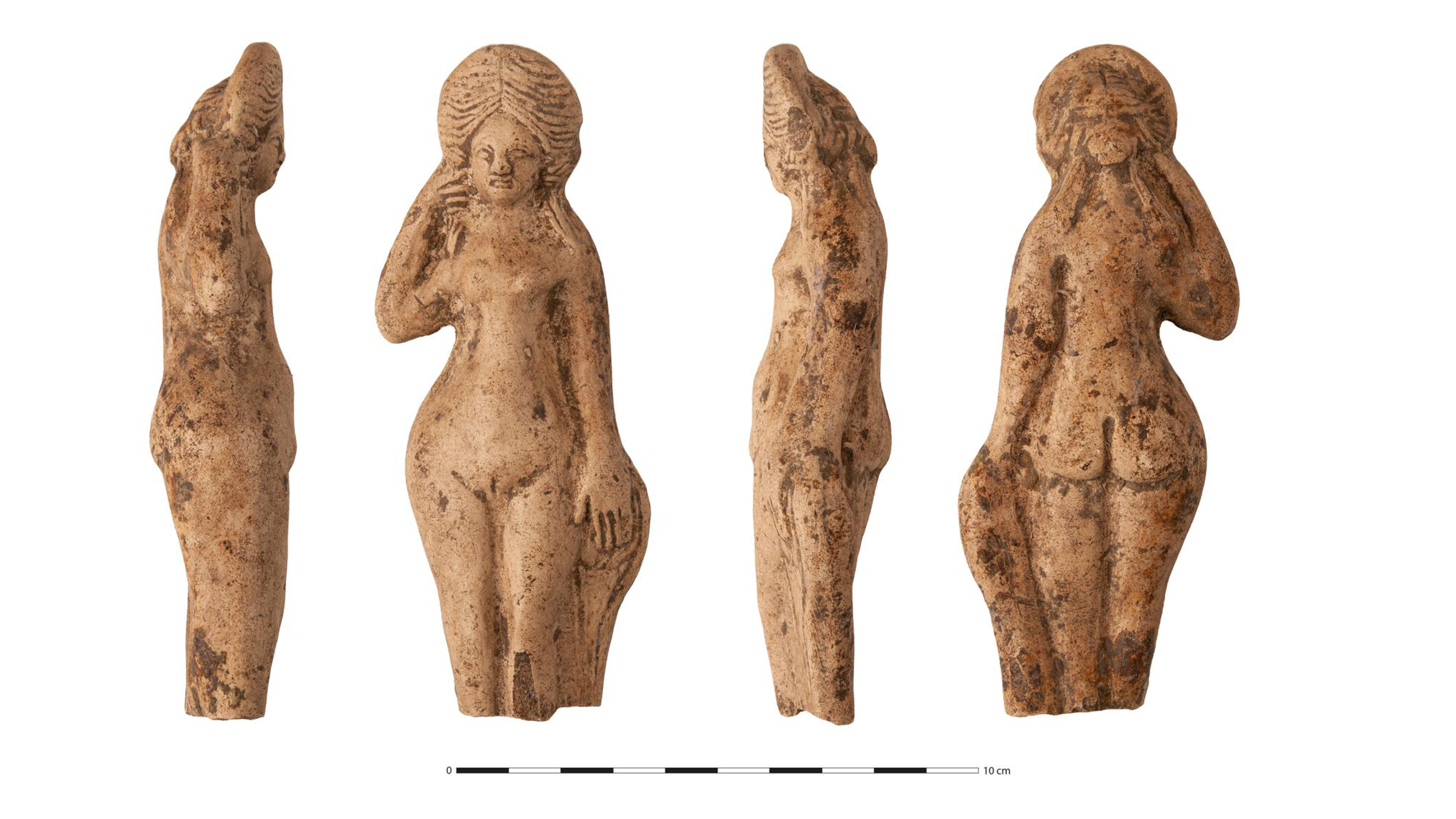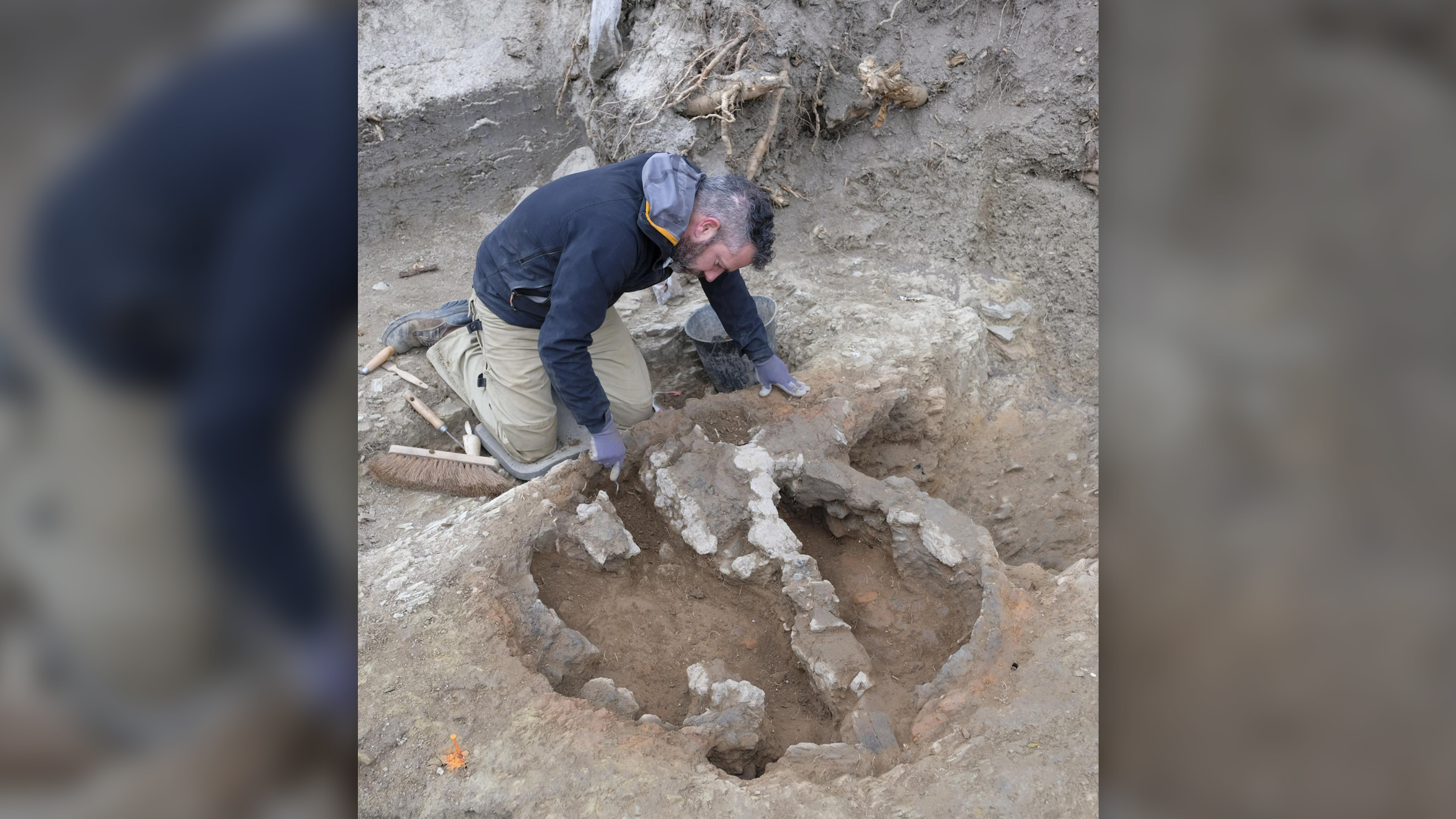Roman-era trash dump containing naked Venus statue and other artifacts unearthed in France
Archaeologists have found a trove of artifacts, including two statues of the goddess Venus, in a Roman-era quarry-turned-trash-dump.

Archaeologists in France have discovered a trove of up to 1,800-year-old artifacts — including statuettes of the goddess Venus, a potter's kiln, coins and clothing pins — in a rare location: a Roman shale quarry that was later repurposed into a trash pit in what is now the city of Rennes.
Located in northwest France, Rennes was founded in the first century A.D. as the Roman town Condate Riedonum. In order to create houses, walls and public buildings, a significant amount of stone was needed. Earlier this month, while excavating ahead of a development project, archaeologists with the French National Institute for Preventive Archaeological Research (Inrap) announced their discovery of a quarry that was likely instrumental in the foundation of Roman Rennes.
Just outside the northern boundary of the ancient city, archaeologists found a Roman-era rock excavation site more than 6.5 feet (2 meters) deep, laid out in stages, from which the Romans extracted slabs of schist, a metamorphic rock commonly used in ancient building construction.
"The Romans are famous for developing quarries all over the Mediterranean," Jason Farr, a Roman archaeologist at Saint Mary's University in Halifax, Canada, told Live Science in an email. Farr, an expert in ancient quarries who was not involved in the present finding, said that "most quarries in the Roman world would have been local affairs, focused on supplying building stone in bulk to nearby towns and farms. The concrete walls favored by the Romans required a great deal of stone."
Related: Sacred chickens, witches and animal entrails: 7 unusual ancient Roman superstitions
When the stone was used up and the quarry abandoned in the second century A.D., it became a large trash dump. Inrap archaeologists discovered numerous fragments of pots and plates, a few coins, some clothing pins, as well as several terracotta statuettes, including two depicting Venus in different roles. Known as the goddess of love in the Roman period, Venus became closely associated with the emperors and was often symbolic of Roman power.
The quarry excavation yielded a fragment of Venus genetrix (mother-goddess) that shows her torso draped in fabric. The second, more complete example is of Venus anadyomene (rising from the sea); she is nude and, with her right hand, she wrings water out of her hair.
Get the world’s most fascinating discoveries delivered straight to your inbox.
"Because they were so close to towns, quarries were frequently reused," Farr said. "Open pit quarries made for ideal trash dumps."


By the Medieval period (14th to 15th centuries), the Rennes quarry was completely filled in. Inrap archaeologists found the remains of wooden buildings, ovens and wells that suggest the area was reused for craft production. A 17th-century underground plumbing pipe was also found, which ran under a historically known boarding school for girls and supplied Rennes with water.
In addition to the stash of artifacts dating back centuries, the Rennes quarry is important for what it can tell archaeologists about stone extraction methods, chiseling tools and organization and management of the location during the growth of a Roman town.
"Relatively few Roman-period quarries for 'mundane' building stone have been excavated," Farr said, which is unfortunate given the key role the construction industry played in the local economy. The newly discovered Rennes quarry, he noted, "is all the more exciting because of its reuse as a trash dump, which is a veritable gold mine of information on ancient life. There really is a lot we can learn here."

Kristina Killgrove is a staff writer at Live Science with a focus on archaeology and paleoanthropology news. Her articles have also appeared in venues such as Forbes, Smithsonian, and Mental Floss. Kristina holds a Ph.D. in biological anthropology and an M.A. in classical archaeology from the University of North Carolina, as well as a B.A. in Latin from the University of Virginia, and she was formerly a university professor and researcher. She has received awards from the Society for American Archaeology and the American Anthropological Association for her science writing.




